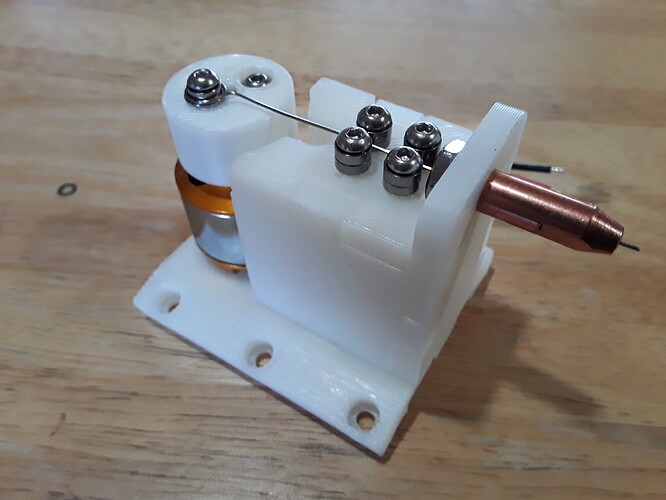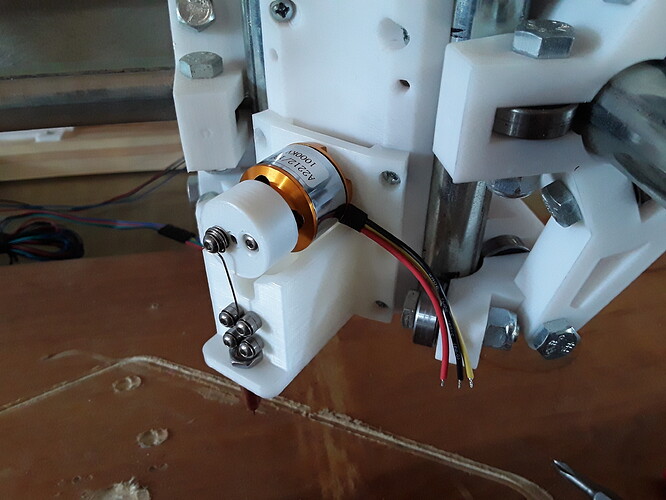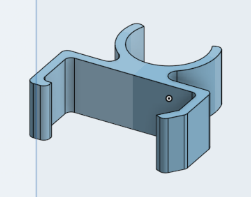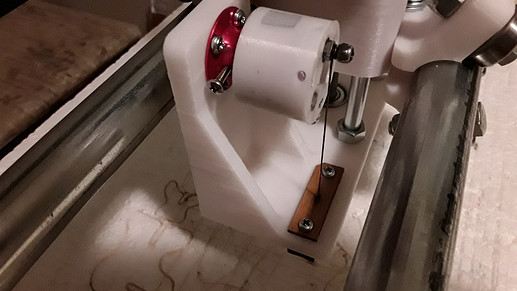All,
I’m posting this to the several relevant RC forums where I’ve started foam cutter threads, to acknowledge and express my appreciation for all the nice folks who’ve commented, encouraged, shared their ideas, and contributed in any way to the development of the MPCNC-based foam cutter… and to let you see an example of just how far we’ve come over the past year.
First, I want to apologize for being so inactive lately and basically taking the summer “off”. I’ve actively kept up with all the great posts but contributed very little. Basically a lazy slob and living alone in my grandparents’ old farm house with no a/c in the Texas summer heat (hey! my grandparents did it…), I’ve been pretty un-energetic and hunkered down most of the time under a fan. But, now, the heat is starting to subside, fall is in the air (sort of…), and I’m starting to feel a bit more energetic again. So I’m now trying to un-clutter my path back to my machines and hoping to start being more active and useful again with all this foam cutter stuff.
Of note, I promised one of my two 3d-printers to my son-in-law when he got settled in a bit more, so I have recently looked into getting another one. I’ve been rather spoiled having TWO printers to work with during all my MPCNC and foam cutter builds, so I really feel I NEED two printers going forward. I’ve been entirely pleased with the $300 FolgerTech 2020 All-aluminum Prusa I3 kit I ordered and built last year, so I looked there first… it’s very well supported, there is a lengthy thread dealing with it on the FliteTest forum, and IIRC Jason (jhitesma) also has one and seems quite pleased with it. Anyway, it is indeed still available (google it… it’s the ebay listing) so I ordered another one and now have it to build. It is another of my motivations for getting my workspace cleaned up and de-cluttered so I’ll have the room to actively get back to building stuff.
Lastly, I can’t begin to tell you how excited I am about all the MPCNC and foam cutter developments of the past year… and now – cheap! – VACUUM hold-down to boot! I think the magnitude of it all really hit me when Curtis (CartCurt), over on the FT forum, posted this picture of his very impressive, relatively inexpensive, and complete foam cutter setup… that wouldn’t exist today were it not for the collective contributions of all the nice folks in the several RC forums where all this development has taken place. What hobbyist RC’er in his right mind wouldn’t love to have a setup like that? Thank you all! – David


 I do also live in the desert (even hotter than TX. This summer at least one source declared the hottest city in the US to be right here in Yuma AZ) but I do have A/C. And I’ve even been running A/C in my shop all summer since my MPCNC is out there. (which is why I printed mine in PETG, though some test parts I did in PLA and set out in the sun for the summer held up FAR better than I anticiapted - only the original motor mount plates failed without serious effort to deform them.) On the other hand I do have a young daughter who takes a lot of my time and only and hour or two a night that I can get out to my shop…and the computer out there is barely capable of running estlcam causing a lot of my lack of progress.
I do also live in the desert (even hotter than TX. This summer at least one source declared the hottest city in the US to be right here in Yuma AZ) but I do have A/C. And I’ve even been running A/C in my shop all summer since my MPCNC is out there. (which is why I printed mine in PETG, though some test parts I did in PLA and set out in the sun for the summer held up FAR better than I anticiapted - only the original motor mount plates failed without serious effort to deform them.) On the other hand I do have a young daughter who takes a lot of my time and only and hour or two a night that I can get out to my shop…and the computer out there is barely capable of running estlcam causing a lot of my lack of progress.






